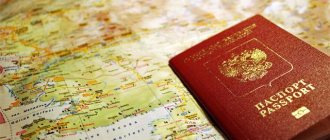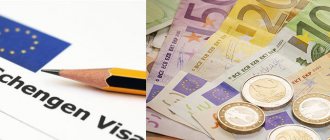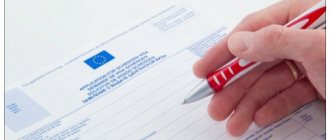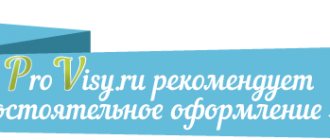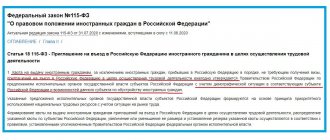Spain is an integral part of the European Union and a valid visa is required to legally visit it. The process of registration and receipt is the same as for other EU countries. Many consider the most difficult thing in this matter to be the need for additional fingerprinting. But there are also positive aspects. These include a simplified visa system with a number of countries that are part of the Schengen group. For many, this combination of circumstances is beneficial from the point of view of promptly obtaining permission to cross territorial European borders.
Short stay visa
Allows you to make tourist and business trips to any state in the Schengen area for a period not exceeding three months from the date of arrival. It is most common in the countries of the European Union. Allows the owner to freely enter and travel throughout the Schengen Area (there are no border controls), as well as leave it from any location within the Schengen Agreement. Schengen can be obtained to achieve the following objectives:
- business, business meetings with partners;
- guest trip, visiting friends and family;
- tourism, beach holidays in Spanish resorts;
- cultural and sporting events;
- transit for air passengers and transit for seafarers;
- official visit, medical reasons;
- short-term scientific research.
Such visas can be single, double or multiple entry. Multiple entry Schengen allows its owner to enter and leave the Schengen area as many times as he or she wants, the other two formats are designed for one or two visits, respectively.
National visa
Issued to specific categories of students or working foreign citizens who, due to their employment, must reside permanently in the territory of the Spanish state. You can receive the document:
participants of international student organizations (for a period of no more than 12 months);
students planning to begin a full course of study at one of the Spanish universities (extension possible);
teachers teaching at universities and other higher institutions in Spain (applies to families);
sports professionals, artists, musicians, actors (to exchange personal experiences);
foreign citizens who find themselves in various types of emergencies (including medical reasons that do not allow the foreign citizen to leave Spain on time).
As in the previous version, it can be single or multiple.
international passport
- The identity card of an applicant for a Spanish Schengen visa is checked for compliance with a number of requirements:
- maximum validity period – 10 years;
- presence of a legible signature;
- validity period after departure from Spain - from 3 months;
the presence of two blank pages for Spanish stamps and a Schengen insert.
The passport must have an ideal appearance, without blots, traces of moisture, partial missing pages or other damage. In addition, the embassy requires you to attach scanned copies of pages with old visas.
Photo
For a spain visa you will need two photos that meet the following requirements:
- size - 35x45 mm;
- the applicant’s face should occupy approximately 4/5 of the photo;
- distance from forehead to tip of chin - 32 mm;
- plain white or light background;
- absence of corners and ovals in the photo;
- no hats or sunglasses.
At the same time, if a person wears glasses, they should be visible in the photo. Another important requirement. The photo must be taken no more than six months before applying to the visa center. The image on the frame must fully correspond to the actual appearance of the citizen.
Financial guarantees
The document is material evidence that the Russian has enough finances to support himself during his stay on the Spanish peninsula. The certificate must be issued no later than 3 weeks before applying for a visa. The bank statement is valid for 30 days.
The document provides a separate column to display the correct amount, sufficient for a comfortable stay in a foreign country (from 60 euros for each day). If the air tickets have not yet been purchased and/or the hotel room has not been booked, there must be additional money in the account to purchase them.
Medical insurance
You can apply for it on the day you apply to the visa center or request it at another legally approved place during their preparation.
Conditions:
- Validity period: the entire period of stay in Spain.
- Scope of coverage: the insurance policy is issued individually for the trip.
- Amount of financial coverage: depends on a number of factors, can reach 30 thousand euros.
If the applicant plans to obtain a multiple visa, then other countries from the Schengen Agreement can be included in the insurance to choose from.
Where can I apply for a Schengen visa?
You can apply for a visa at individual embassies or through visa centers. At embassies where visas are issued, documents are submitted by appointment. Visa service centers usually operate without prior appointment. It is important to understand that service centers are not the same as travel agencies. These are independent organizations that process visa documents with the permission of official embassies.
They act as a kind of intermediaries between clients, from whom they accept documents, and embassies, where they transfer documents for visa processing, and also conduct the reverse process, transferring completed documents from the embassy to clients. When choosing a visa service center, it is important to check its accreditation; this can be done on the website of the embassy itself, where a list of centers with which the embassy works is posted.
IMPORTANT: the decision to issue or refuse a visa is made only by the embassy, and does not depend on the work of the service center. At the visa center, documents are submitted on a first-come, first-served basis. They accept your documents, check them, and ask the necessary questions. You can also pay service and consular fees there. When paying fees, you should clarify the possible methods in advance, since cashless payment is not possible everywhere, and some branches do not have ATMs for withdrawing cash. This should be taken care of in advance.
After paying the fees, you will need to undergo a fingerprinting procedure. Since September 2015, fingerprinting has become a mandatory step in obtaining a permit for all citizens over 12 years of age. The procedure is mandatory every 5 years. In some service centers, which allows you to undergo fingerprinting outside the visa center or consulate. The cost of the service is from 150 euros.
If you don’t have time to visit a service center, in some cases a visa can be issued online. Naturally, this will cost a little more, since you will additionally need to pay for courier services.
After submitting documents to the embassy, up to 10 calendar days are allotted for their consideration. If the application is submitted urgently, the review period is reduced to three working days. It is important to remember that embassy and consulate employees have days off not only according to the national calendar, but also according to the calendar of their country. When applying for a visa through a service center, you should allow an additional 2-3 days for the delivery of documents.
When submitting documents, you receive a number that allows you to track the status of your application on the website of the consulate or service center. Unfortunately, it is not possible to find out about the decision on the application in this way, but you can track the stage at which your documents are located.
Flights
The applicant must provide factual evidence that he intends to return to his home country. As evidence, scanned copies of air tickets in both directions must be attached to the package of documents. A printed confirmation of their purchase or a reservation without advance payment will be taken into account. We emphasize that tickets paid in advance do not guarantee Schengen approval. If the consulate refuses, they will simply disappear.
Certificate from place of work
The document must be printed on company letterhead. The text must contain the following information:
- full legal name of the organization;
- legal and actual addresses of the employer;
- contact details for feedback;
- information about the position held, date of employment;
- average salary for the reporting period in the established currency.
The certificate can be drawn up in Russian or English.
List of required documents, self-preparation
Draw your attention to! An incomplete or incorrectly formed set of documents may result in refusal to accept a visa application.
- International passport
- One biometric photo 3.5 x 4.5 cm
- A copy of the internal civil passport of the passport
- Copy of foreign passport
- Health insurance policy
- A completed application form
- Consent to the processing of personal data
- Purchased air tickets or tickets for another vehicle
- route sheet for traveling by private car
- Proof of accommodation in a hotel or boarding house
- proof of travel program from the tour operator
- or other document
- Economic guarantees - certificate of employment on official letterhead (position, salary, vacation)
- copy of pension certificate
- or a certificate from an educational institution
- Financial guarantees - certificate from the bank (minimum 720 euros)
- Proof Your readiness to return to the Russian Federation
- real estate ownership certificate
- children's birth certificate
- or marriage
- other document
- Application form for submitting documents
- Visa fee , in accordance with the categories specified in the visa regime agreements with Russia
If documentation is transferred to French missions through visa centers, permission to process personal data is required.
The required list of documents for a visa to France in 2021 and during the previous two years includes an indispensable condition - the submission of the biometric parameters of the applicant (upon reaching the age of 12). They are retained for a 5-year period after acceptance and are used for subsequent issuance of Schengen visas.
- Above is a list of documents that are generally required to apply for a tourist visa to France -
this is the most common request. The time of issue of all papers included in the dossier must be less than 1 month ago.
To open a Schengen visa to France, list of documents,
given earlier is supplemented by a photocopy of previous Schengen visas used (if any), as well as the availability of tickets (it is acceptable to provide booking confirmation).
Additional documentation for a child visa
If you are planning a trip with children, you will need:
- Birth certificate (copy);
- A copy of the parent’s visa, at different times for filing papers (and in the parent’s passport, 2 pages free of visa stamps must be kept for each child).
If the child is accompanied by a trusted person (or only one parent), it is necessary to present a notarized permission from the second parent or person performing guardianship duties for the departure of the minor (if the other parent is deprived of his rights to the child, then the requirement is waived).
The remaining papers are submitted based on the intentions of the traveler: if the visa is a visitor, you need an invitation letter, if treatment - confirmation of completion of a medical course, documentary evidence of participation in international events, etc.
Proof of residence
The consulate must be sure that the applicant has taken care of his residence on the territory of the Spanish state. To do this, Russian citizens must provide a document confirming the reservation of a hotel room or other alternative apartments, which contains:
- last name, first name, foreign passport number;
- full name of the hotel, address, contacts;
- information about relatives living at the hotel if the person came with his family;
- data on partial or full payment for temporary hotel accommodation.
If a foreign citizen applies for a long-term visa, then in this case he can provide the visa officer with an apartment rental agreement or a certified copy thereof.
Documents for registration
To obtain a Schengen visa, a student wishing to study in Europe will need to prepare the following documents:
- international passport, the document must be valid for 3 months from the date of return home, and have 3 blank pages;
- a document proving the fact that after the visa expires, the student will return home;
- confirmation of solvency;
- hotel room reservation (or original invitation from a private person);
- motivation letter;
- receipt of tuition payment (if payment was incomplete, it is recommended to provide a letter of guarantee);
- an invitation from the university, certified by a seal;
- medical insurance;
- photo;
- statement.
This is an incomplete list of documents. A more accurate list must be clarified by contacting the consulate of the Schengen country where you plan to enter.
When obtaining a Schengen visa, a student or schoolchild may only have problems with employment and financial documents.
To avoid unnecessary hassle, you need to go to the dean’s office and get a certificate from your university. The certificate must contain information that the student is currently studying at the university. This is necessary even if a person does not receive a student visa, but is going to Europe as a tourist.
And also for a visa with which you can enter the Schengen countries, you must attach a certificate from the place of work of one of the parents (you can have both at once). An additional document is a certificate from the bank account of the father or mother.
The parent must write a sponsorship letter stating that he is willing to finance the student's trip.
This list of documents must be accompanied by a reservation for air tickets and a hotel room. Additionally, insurance and a completed application form are included.
If the student works on his own, part-time, then he must attach a certificate from his place of work. If the amount is insufficient, a sponsorship letter will be required.
If a student has his own bank account, then this is a double-edged sword. The consulate staff may have a question: where does the student get the money if he does not work? Therefore, it will be necessary to indicate the source of income.
Filling out the form
To receive the questionnaire, you need to install the Adobe Acrobat reader program - it allows you to work with files in pdf format. The form must be filled out either in the language of the country where you plan to enter, or in English.
An example of filling out an application form for a Schengen visa
Application form for Schengen visa
You can write either on a computer or by hand. But many consulates require that the application form be filled out on a computer.
There is no need to paste a photograph into the application - this will be done by a consular officer.
Sponsorship letter
This is a document confirming the financial obligations of another person towards the applicant.
The Schengen countries are interested in financially secure tourists coming to them. That is why, when applying for a visa, you must provide any document that can confirm your financial solvency.
Most often, close relatives of the student act as sponsors. In this case, even the strictest consulates - Germany, Belgium and the Netherlands - have no complaints. But in most cases, any financially secure person can become a sponsor.
If a student is invited by a resident of the European Union, then a sponsorship document is not required at all: all expenses for the trip are covered by the host party - this must be indicated in the invitation letter.
There is no set template for a sponsorship letter. It is written in free form. The following must be indicated:
- FULL NAME. applicant and sponsor;
- degree of relationship - if any;
- passport details of the parties;
- travel dates.
The letter can be written in Russian or English. But some consulates (for example, Belgian) ask for an authorized translation of the Russian version.
The letter does not need to be certified by a notary. But if the sponsoring person is not a close relative of the applicant, then it is better to visit a notary.
In addition to the letter, photocopies of passports are submitted, as well as a certificate from the sponsoring person’s place of work (it is also allowed to submit an extract from his bank account).
If a person, at the time of leaving for Europe, has completed his studies at the university, works unofficially, and his parents are pensioners, then he only needs to provide a bank account statement. The amount should be enough for tickets, hotel payment and with you for the duration of the trip (approximately 70–100 euros per day, depending on the country).
If parents work unofficially, then you can show a certificate from an unofficial place of employment + bank account.
If the sponsor is any organization or company, then you need to submit a letter from it. The letter must contain information that the company will bear all costs.
A friend who works officially could theoretically be a sponsor. But it is far from a fact that a sponsorship letter from him will be accepted and considered.
Additional documents
The final list of documents for obtaining a visa to Spain is determined by the purpose of the planned visit. We invite you to familiarize yourself with each specific case in more detail.
Tourist trip. A voucher with a detailed route, hotel reservation (if there are several places of accommodation, you must mention each one).
Guest visit. A written invitation from a relative, confirmation of relationship, scans of documents confirming the identity and ownership of Spanish real estate of the host party.
Meeting of business partners. An invitation from the host organization, a certificate from the place of work justifying the purpose of the business visit, a letter of guarantee for payment of the applicant’s financial expenses for obtaining a visa.
For persons under the age of majority. A copy of the birth certificate for children under 14 years old, a school certificate with the details of the institution, copies of passports, permission to travel from parents.
For pensioners. A copy of the pension certificate, sponsorship letter from a relative or guardian.
For car enthusiasts. Driver's license of the Russian Federation or international standard, Green Card, vehicle registration certificate, power of attorney for the car.
The document requirements for the Spanish Schengen visa are quite strict. Please check that you have all the required papers carefully. Preferably several times!
Documents for a Schengen visa – we collect everything you need
Let's look at the documents that are needed for a tourist Schengen visa . This means the main goal is not visiting relatives, work or study, but tourism. Business visits on it are also not allowed. For these cases, there are other types of visas. In this article we only consider obtaining a tourist visa.
If you have a tourist visa, this does not mean that you cannot visit relatives. It just shouldn't be the main purpose of your trip.
In general, the following documents are required for a Schengen visa 2015:
1. International passport:
- the passport must be no older than 10 years,
- valid for at least three more months after the expected date of departure from the Schengen area,
- have at least two blank pages.
2. Internal passport
That is, a passport of a citizen of the Russian Federation or another document confirming that you are legally arriving in the territory of the Russian Federation.
3. Photos
The size of photographs should be 3.5x4.5 cm, color, without corners. You should not be smiling in the photograph; your face should be large and easy to read. No marriage is allowed.
Take at least 3 pieces to the visa center. There is no need to glue or pin them anywhere.
The photos you bring are for the application only. You will have your visa photograph taken at the visa center.
Read more in the article Photo for a Schengen visa
4. Insurance
The sum insured must be at least 30,000 euros. The insurance must be valid in all Schengen countries for the entire duration of your stay.
If you plan to travel to Europe again on the same visa, your insurance will be checked at passport control upon re-entry. Please don't forget to take out insurance.
You can use the online service to find an insurance company.
5. Housing reservations
Any confirmation of where and how you intend to live in your name. If you have relatives or friends, then you need an invitation.
You can attach printouts of confirmation letters from accommodation booking sites such as Booking.com or airbnb.
If you purchase a tour, the accommodation will be indicated in the tour description.
If you have a home in Europe, please attach a document confirming ownership.
If it is not possible to document your plans for housing, for example, you are going to ride a bicycle throughout Europe and live in campsites without prior reservation, then describe your plans in writing and translate into English.
6. Route confirmation (tickets)
This means a purchased voucher or simply plane, train or bus tickets. If you are planning internal travel, you do not need to attach these tickets. It is only important to confirm your intention to leave the Schengen area in a timely manner.
What if you are traveling by car? We describe your plans in writing with dates and border points where you plan to cross the external border. In this case, internal movements should be described approximately. Please attach your driver's license to the application form. vehicle registration certificate and car insurance.
Not MTPL, but a special insurance policy. the so-called green card.
7. Certificate of employment in form 2-NDFL for the last three months (financial support for the trip)
You need to confirm your income and, no less important, your connection with your homeland. If you have a good job, it means you are a reliable tourist, you are going to spend money and will not stay in the European Union living under a bridge, not wanting to return home.
Bank statements with details for the last three months, whether you own real estate, a car, a yacht or other signs of a prosperous existence will also fit here, supplement and/or replace the 2-NDFL certificate.
In addition, a sponsor (for example, parents) can finance your trip. In this case, you must attach a sponsorship letter to your visa application. It should say that someone agrees to cover your expenses for a trip to Europe. The sponsorship letter must include:
- A copy of the first page (with photo and data) of the sponsor's passport,
- confirmation of sponsor's income,
- confirmation of the relationship of the applicant (you) with the sponsor: birth certificate, marriage certificate, etc.
8. Copies of documents:
There may be differences depending on the consulate that processes the visa application.
In any case, you need:
Copy of international passport:
- a copy of the spread with a photograph, personal data and information about the issuance of the document,
- page with information about children,
Copy of internal passport:
- copies of all pages that contain information (a page with information about the issue of a foreign passport to you, a page with a mark on registration in Russia, etc.).
If you are traveling with children, then make another page with a note about your children.
All copies are submitted in a single copy. However, some consulates may ask for two copies or additional copies of all pages of the passport. Therefore, if you are in doubt about whether or not to make a copy of any page, it is better to do so - it is not so expensive.
More details can be found in the official, agreed list of documents for a Schengen visa:
9. Paid receipt for the visa fee of 35 euros plus the visa center service fee of 30 euros.
10. Application (questionnaire)
The application for a Schengen visa must be completed by hand and/or electronically in English or the language of the country for which you are receiving a visa. Don't forget to sign. Applications from minors must be signed by their parents.
Whether you submit your application electronically or on paper depends on the consulate. This needs to be clarified when you prepare the documents.
Documents for the child:
- up to 14 years old - original and copy of birth certificate (instead of passport),
- notarized consent of the parent or guardian issued no earlier than three months before the trip (read more about the child traveling abroad),
- a copy of your parents' valid Schengen visa (if any). If you are applying together with your child, then no need.
Having collected all these documents, you need to make an appointment at the visa center and submit documents for a Schengen visa. Read on to learn how to get a Schengen visa.
The procedure for generating documents
Collecting the necessary list of documents into a single package is not all. They must be organized in accordance with accepted standards. The order of distribution is as follows:
A passport with a photo attached and signed on the back.
A fully completed application form, formatted according to the sample.
Certificate from current place of work.
Documents confirming financial solvency.
Photocopies of all pages of the passport.
Copies of completed pages of the passport of a citizen of the Russian Federation.
Additional documents attached in random order.
If the documentary layout does not meet the specified standard, representatives of the Spanish consulate have the right to refuse further consideration.
Where to submit documents (at the visa center and at the consulate)
In Russia, several organizations accept documents for a Schengen visa to Spain:
Consulate General of Spain in Moscow and St. Petersburg;
travel agencies and tour operators with valid accreditation;
visa services in major cities and regional centers of the country.
In the first case, prior registration by phone is required. In the last two, online registration is possible on the official website of the selected company.
How to get a Schengen visa yourself
A Schengen visa is required for Schengen countries. Currently these are 26 European countries:
Austria, Belgium, Hungary, Germany, Greece, Denmark, Iceland, Spain, Italy, Latvia, Lithuania, Luxembourg, Liechtenstein, Malta, the Netherlands (Holland), Norway, Poland, Portugal, Slovakia, Slovenia, Finland, France, Czech Republic, Switzerland , Sweden, Estonia
Types of Schengen visas by validity period
• Single entry visa
allows you to visit the country once, and upon expiration of the visa, you are required to leave the Schengen country.
• Double entry visa
gives the right to visit the country twice. When filling out the application form, in the entry/exit columns, you must indicate the entry date for the first period and the exit date for the last period of stay. When submitting documents to the consulate, you must provide documents confirming accommodation (invitation or hotel reservation) for two periods of stay. If you were given a visa for 15 days for the period from January 1 to August 31, then you can enter the country twice, but stay there only 15 days in total for the entire period.
• Multiple visa
is an opportunity to visit a Schengen country several times. This visa is issued for a certain period of time (from 180 days to 5 years). This type of visa is required for people who frequently travel abroad. A multiple visa allows you to visit different countries of the Eurozone, but it is important that your first entry is into the country whose embassy issued you a similar visa. Most often, a multiple visa is issued for 180 days, therefore, you can stay in the Schengen zone for a total of up to 90 days.
Schengen visa categories
• Category A
– “airport” – makes it possible to be in the international transit zone of the airport during a transfer from one aircraft to another. You cannot leave the airport with such a visa. You must have a ticket with you confirming your onward flight.
• Category B
– “transit” – gives the right to transit through the territory of the country on the way to a third country. The duration of the transit stay is no more than 5 days.
• Category
C
– “tourist” – gives the right to stay in the country for a certain number of days specified in the visa. Travel can be made throughout the Schengen area.
• Category
D
– “national” – gives the right to stay in the country, but subject to staying in one country for more than 90 days within 6 months from the date of first entry. The visa gives the right to travel through other European countries (no more than 5 days).
• L imited territorial validity visa
(LTV) is valid only in the territory of the country whose embassy issued this visa (without the right of transit through other countries).
Where to apply for a Schengen visa
You can apply for a Schengen visa at the consulate of the country you are going to visit. Or documents can be submitted through the Visa Service Center, if there is such a center in your city. In case you live in a city where there are no such centers, you can send documents by courier service, for example, DHL or Pony Express. Do not forget that you must pay a visa fee for processing your documents. Some consulates may require personal presence, and some consulates may have your relatives/friends come to you; most importantly, do not forget to issue a power of attorney from a notary. Always check the information on the website of the consulate/embassy of the country you are going to.
Which consulate to get a Schengen visa at?
If you are going to visit only one country, then submit documents to the consulate of the country where you are going.
If you want to visit several Schengen countries at once, you need to fill out the documents at the consulate of the Schengen country where you will be staying the longest.
If you are going to spend the same number of days in several countries, you must apply for a visa at the consulate of the country whose border will be crossed first.
First country of entry for a Schengen visa
First entry rule
A Schengen visa gives the right to travel to all countries of the Schengen zone, but there are restrictions called the “first entry rule”. This rule is that you must enter the country that issued your visa. If you come to another Schengen country, then this can be considered as transit through the country, and therefore you can stay there for no more than 5 days. At the border you may be asked for confirmation (tickets or hotel reservation). In reality, this rule is rarely enforced.
When to submit documents for a visa
Documents for obtaining a Schengen visa will be accepted for consideration no earlier than three months before the trip. It usually takes 5-20 days to review documents at the consulate.
Applying for a Schengen visa yourself
Tips for tourists
• Decide which country you are going to. If you are going to visit several countries, then determine which country will be the main one, and apply for a Schengen visa there.
• Go to the website of the embassy of the desired country and study the information. This is due to the fact that each country may introduce its own additional rules for obtaining a visa. List of embassies of Schengen countries in Russia>>
• Prepare the necessary documents. To the list of main documents
for visa includes:
- international passport,
- medical insurance,
– confirmation of the availability of the required amount of money for accommodation,
– round trip tickets,
– photographs (requirements >>)
• Fill out the form, which can be downloaded on the embassy website.
• Make an appointment with the consulate on the official website or by phone and submit the prepared set of documents and pay the visa fee.
Deadlines for processing documents and obtaining a visa
The Spanish consulate makes a decision on visa approval within 5 working days. The countdown begins from the date of submission of documents at the visa center. We emphasize that the timing of document flow from the regions to the capital and back is not included in the designated time frame. Each application is considered by the competent authorities on an individual basis.
Through a travel agency, processing times range from 10 working days. It will take another 10-12 days to send documents to the embassy and back. The total time costs average 20-22 days. The interaction of the applicant with the visa center reduces the time for receiving a response to 1 business day with the same manipulations. Which method to use is up to you!
If you have been refused a Schengen student visa
So that the consul’s refusal of a student visa does not become a fatal blow for you, remember: you are not the first and not the last. This is the same as going for a retake: it doesn’t happen to anyone. The main thing is to understand why you were rejected, correct your mistakes and try again. By the way, busy embassy workers do not have time to explain the reasons for the refusal, so you will have to figure it out on your own.
So, why you may be denied a Schengen student visa:
- The documents are filled out incorrectly, or some document is missing.
- There is not enough money in the bank account.
- The training schedule does not correspond to the dates requested on the visa.
- You already had a student visa, but you skipped school and got expelled.
- You have already been refused at some other embassy before.
- You already have a valid Schengen card.
- You are persona non grata in the selected country.
In case of refusal, it would be a mistake to get a new passport and try to apply for a visa at the embassy of another country.
If it is too difficult to apply for Schengen for a student yourself or there is absolutely no time for it, you can go the other way and contact a visa center. They will help you and do everything for you. Naturally, you will have to pay for the time saved.
And if collecting documents for a student visa is hindered by studying at your home university, contact a professional student service. We will help you solve any problem, and you can calmly stand in line at the embassy without worrying about your grades.
